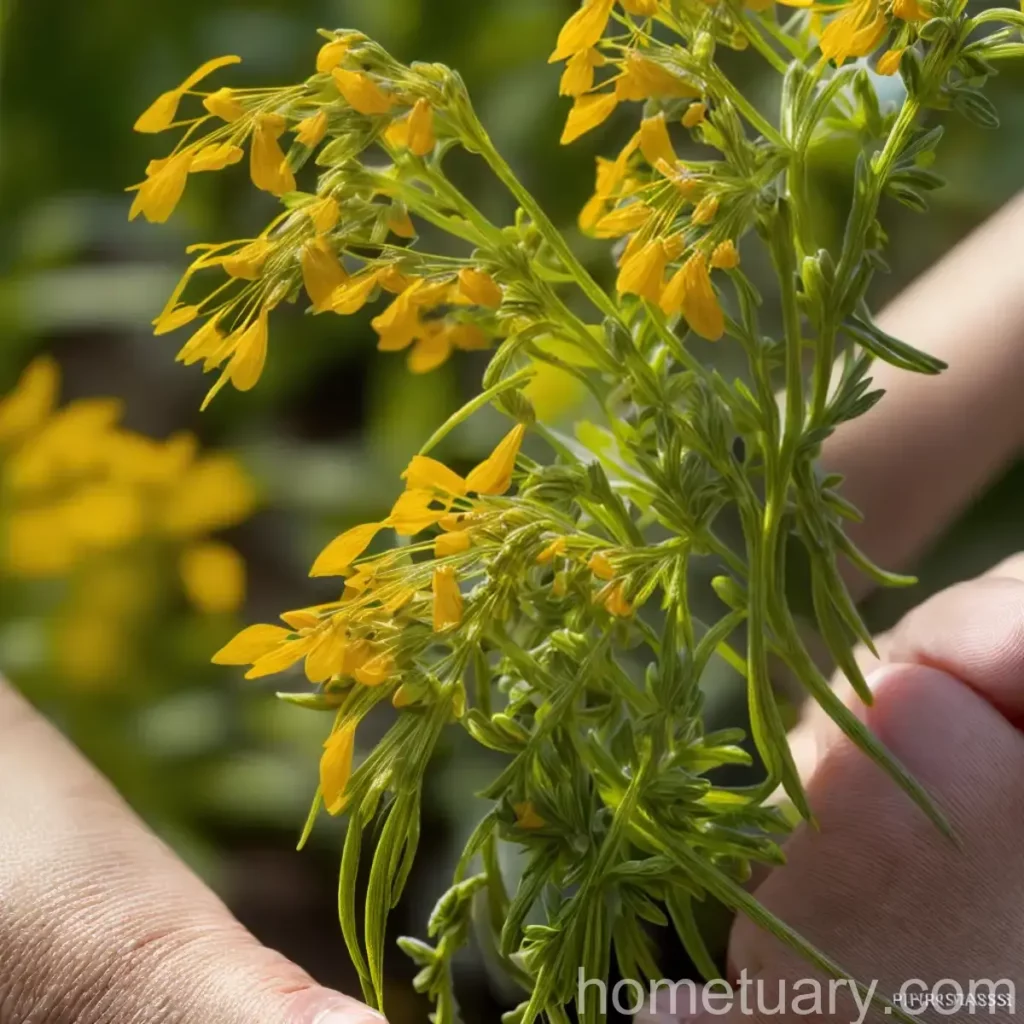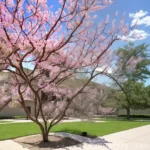Partridge Pea (Chamaecrista fasciculata) – A Comprehensive Guide
In the world of plants, the partridge pea (Chamaecrista fasciculata) stands out as a fascinating and valuable species. This plant, with its vibrant flowers and ecological significance, has captured the interest of botanists, gardeners, and nature enthusiasts alike. In this comprehensive guide, we will delve into the various aspects of the partridge pea – from its cultural significance to its growing conditions and maintenance. You will also discover its uses, folklore, and vital role in sustaining wildlife and ecosystems.
What is the Partridge Pea?
The partridge pea, scientifically known as Chamaecrista fasciculata, is a herbaceous annual plant that belongs to the legume family, Fabaceae. This plant is native to North America and can be found in various habitats, from open woods to prairies and fields. It is known for its distinctive bright yellow flowers and feathery, fern-like leaves, making it an attractive addition to natural landscapes and garden settings.
Plant Characteristics
- Scientific Name: Chamaecrista fasciculata
- Common Name: Partridge pea
- Family: Fabaceae
- Habitat: Open woods, prairies, fields
- Flower Color: Bright yellow
- Leaf Type: Feathery, fern-like
Key Takeaways – Partridge Pea (Chamaecrista fasciculata)
Before delving into the various aspects of the partridge pea plant, let’s overview the key takeaways associated with this fascinating species.
- Scientific Name: Chamaecrista fasciculata
- Habitat: Native to North America, found in open woods, prairies, and fields
- Flower Characteristics: Vibrant bright yellow flowers
- Ecological Significance: Serves as an important food source for wildlife and plays a role in sustaining ecosystems
- Cultural and Folklore Significance: Recognized for its historical uses and symbolism in various cultures
- Gardening and Landscape Use: Valued for its ornamental qualities and potential for ecological landscaping
Now, let’s proceed to explore various aspects of the partridge pea plant in detail.
Culture
Understanding the cultural significance and uses of the partridge pea plant is essential to appreciate its historical and modern relevance.
Uses
The partridge pea has been valued for its various practical and cultural uses.
Medicinal Properties
In traditional medicine, certain Native American tribes used partridge pea for its medicinal properties. The roots and seeds were utilized in herbal remedies for treating ailments such as diarrhea, skin irritations, and as an emetic.
Natural Remedies
Parts of the partridge pea plant have been used in natural remedies due to their purported healing properties.
Folklore
The partridge pea has also been a subject of folklore and symbolism in various cultures. Its bright yellow flowers and feathery leaves have been associated with different meanings and uses in folklore and traditional beliefs.
Symbolism
In some cultures, the partridge pea has been associated with symbolism related to positivity, growth, and renewal. The vibrant flowers and their role in sustaining wildlife have contributed to their symbolic significance in folklore.
Wildlife and Ecosystem
The partridge pea plays a crucial role in supporting various forms of wildlife and contributing to the balance of ecosystems.
Pollinators
The bright yellow flowers of the partridge pea attract pollinators such as bees and butterflies, contributing to the pollination of other plants in its habitat.
Habitat and Ecosystem Support
In its natural habitat, the partridge pea provides food and shelter for a variety of wildlife, including birds and small mammals. Additionally, it plays a part in maintaining the ecological balance of its surrounding environment.
General Care and Maintenance
To successfully cultivate partridge pea plants, it is essential to understand their specific requirements regarding water, sunlight, soil, and other factors.
Water
Watering Requirement: Partridge pea plants prefer well-drained soil and moderate watering. Once established, they are relatively drought-tolerant and require minimal irrigation.
Sunlight
Sun Exposure: Partridge pea plants thrive in full sunlight. They require at least 6-8 hours of direct sunlight per day to achieve optimal growth and flowering.
Soil
Soil Type: Well-drained, sandy or loamy soil is ideal for partridge pea plants. They can tolerate a range of soil pH levels but perform best in neutral to slightly acidic conditions.
Fertilizer
Fertilization: Partridge pea plants are light feeders and generally do not require heavy fertilization. A balanced, all-purpose fertilizer can be applied sparingly during the growing season to support their growth.
Pruning
Pruning Requirement: Minimal pruning is necessary for partridge pea plants. Deadheading spent flowers can encourage further blooming and prevent self-seeding in garden settings.
Propagation
Understanding the various methods of propagation is essential for expanding the population of partridge pea plants.
Seed Propagation
- Partridge pea plants can be propagated from seeds, which are contained within distinctive, elongated seed pods.
- Seeds should be scarified or nicked before sowing to improve germination rates.
Container Propagation
- Partridge pea plants can also be successfully grown in containers. A well-draining potting mix and a suitable-sized container are essential for container cultivation.
Popularity
The appeal of partridge pea plants extends beyond their ecological significance, with their attractive flowers and landscaping potential contributing to their popularity.
Gardening
- Partridge pea plants are valued for their landscape appeal and their ability to attract and support pollinators in garden settings.
- They are often included in wildflower meadows, native plant gardens, and ecological landscaping projects.
Wildlife Enhancement
- The popularity of partridge pea plants is further enhanced by their role in supporting wildlife, making them a desirable addition for those seeking to create wildlife-friendly gardens.
Common Diseases and Pests
Like many plants, partridge pea is susceptible to certain diseases and pests. Understanding these potential issues is crucial for successful cultivation.
Common Diseases
-
Powdery Mildew: Partridge pea plants may be susceptible to powdery mildew, especially in humid conditions. Adequate air circulation and proper spacing can help reduce the risk of this fungal disease.
-
Root Rot: Overly wet soil conditions can lead to root rot in partridge pea plants. Ensuring well-drained soil and avoiding overwatering can prevent this issue.
Disease Diagnosis
- Early detection of diseases is essential for effective control. Regular monitoring and prompt action can help prevent the spread of diseases within the plant population.
Common Pests
-
Aphids: These small sap-sucking insects can infest partridge pea plants, leading to stunted growth and distorted foliage. Natural predators and insecticidal soaps can be used for control.
-
Caterpillars: Certain caterpillar species may feed on the foliage of partridge pea plants. Manual removal and biological controls can aid in managing caterpillar populations.
Botanist’s Tips
As a botanist, here are some valuable tips for cultivating and appreciating partridge pea plants.
-
Ecological Importance: Recognize and promote the ecological significance of partridge pea plants in supporting pollinators and wildlife.
-
Native Plant Landscaping: Consider incorporating partridge pea plants into native plant landscaping designs to enhance ecological diversity and sustainability.
-
Conservation Efforts: Support conservation initiatives aimed at preserving native plant species, including the partridge pea, and their associated ecosystems.
Fun Facts
To add a touch of intrigue to your understanding of the partridge pea, here are some captivating fun facts about this remarkable plant.
-
The common name “partridge pea” is believed to originate from the idea that the plant’s seeds are commonly consumed by partridges and other game birds.
-
Partridge pea plants have a fascinating mutualistic relationship with certain species of ants. The plants produce extrafloral nectaries, which attract ants that in turn protect the plants from herbivorous insects.
Now that we have explored the diverse aspects of the partridge pea plant, from its cultural and ecological significance to its practical uses and care, you can gain a deeper appreciation for this captivating species.
Links to External Resources
To expand your knowledge and resources on partridge pea (Chamaecrista fasciculata), here are some valuable external links:
- Native Plant Database – Partridge Pea
- USDA Natural Resources Conservation Service – Partridge Pea
- Lady Bird Johnson Wildflower Center – Partridge Pea
As you continue your exploration of the botanical world, consider the essential roles that plants such as the partridge pea play in sustaining ecosystems, supporting wildlife, and enriching our landscapes with their beauty and ecological significance.















